Get Started Today!
- Index
- Optimism in the Turbulent Twenties
Anthony Y. - The Journey of Future Transportation
Akshaya A. - Courage
Akshaya A. - Concepts of Education
Anna W. - Imagined Letter from Matilda Cook on the Occasion of the Yellow Fever Outbreak of 1793
Cynthia Z. - Island of the Blue Dolphins
Cynthia Z. - Opinion
Haejin L. - My Favorite Sense
Cynthia Z. - An Appreciation of Sight
Haejin L. - An Admirable Character
Ansh G. - Fighting for Freedom
Haejin L. - One Young Writer
Agnes Y. - Malcolm X
Ryan C. - The Stranger
Caitlin K. - My Favorite Character
Ryan C. - Video Games and Violence
Ryan C. - Safety in Sports
Christian B. - The Life of a Sunset
Seok Young C. - Interlude in Ithaca
Seok Young C. - SPAC, MOMIX Botanica: A Review from a Sixth Grade Dancer
Ji Woo C. - Peace Through the Centuries
Alice L. - Without My Senses
Yena S. - Persistence
Seok Young C. - Stop Animal Killing
Ji Woo C. - My Creation
Mateo N. - Recess Is Important in American Schools
Mateo N.
Anthology of Student Writing
Welcome
Welcome to the anthology of student writing web page. We will be adding to it frequently and showcasing the fine writers who have gone through our program.
This essay responds to the following question:
Optimism in the Turbulent Twenties
Anthony Y.
Shenendehowa Central School District
Clifton Park, NY
“Images sometimes capture particular periods in history. The unreachable green light… has become a symbol of the yearning of America in the 1920s.” This quote by David Ignatius presents the idea that the 1920s was a time of enlightenment. I agree with Ignatius because there was more social freedom for women as well as new inventions which made Americans’ lives easier. After World War I, new innovations such as the automobile and the radio helped Americans get more connected across the country. Discrimination was rampant during the 1920s towards blacks, but artists and activists like Langston Hughes acknowledged that people should have pride and fight for equal rights by writing poems such as “I, too”.

According to “The Turbulent Twenties” by Ira Peck, the 1920s was a time period with new inventions, ideas, and more social freedom for women such as the right to vote. Using new ideas to improve American lives by inventing new inventions was a change for the 1920s. Ira Peck wrote, “Automobiles replaced horses and wagons...New gadgets such as the refrigerator, vacuum cleaner, and washing machine altered domestic life for people in urban areas.” Since the U.S was a very large country, traveling across the country took a long time by wagons and horses. However, the new automobiles made transportation faster and easier. Also, with the refrigerator, vacuum cleaner, and washing machine, people finished work in two hours that used to take two days. Likewise, other inventions significantly influenced every single part of Americans’ lives. In addition, women got more social freedom by gaining some rights that they didn’t gain in the past. In the article, the author states, “Finally, it took an amendment to the Constitution to grant all women the right to vote. The Nineteenth Amendment was ratified in 1920.” Women had been fighting constantly for the right to vote. However, they kept getting denied until the 1920s. Thus, a new amendment and new inventions enlightened American lives and started to change domestic lives into modern day life. With so many new electronics and machines to help Americans with their daily work, the 1920s were a new era. Therefore, the 1920s were a time of optimism because of the flourishing of great ideas.
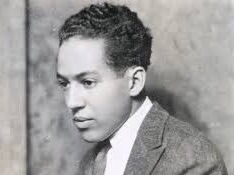
In the poem “I, Too,” Langston Hughes shows that African-Americans should have pride in themselves and be strong which influenced the era of the 1920s by turning it into a time of hope. Hughes uses symbolism to represent the idea that African-American pride will lead to their dreams. In the poem Hughes writes, “But I laugh/ And eat well/ And grow strong”. This shows African-Americans will have pride in themselves, and whenever they come upon an obstacle they will overcome it by growing strong. Knowing that they are enough concerning who they are right now, Langston Hughes encouraged African-Americans to strive for their dreams. With the use of symbolism, Langston Hughes develops the theme that African-Americans are equally strong and smart as whites and should be proud of who they are. The poet says, “They’ll see how beautiful I am/ And be ashamed.” Always being sent to eat in the kitchen and not being able to show themselves to others was a disgrace that he explores in the poem. However, once being strong and brave enough to show who they truly are, other Americans will be ashamed for not recognizing their true appearance. Therefore, the extreme effort by artists and activists like Langston Hughes showed a bright future for Americans. With optimistic views that African-Americans shouldn’t get discouraged by others, the decade of the 1920s was a time of optimism.
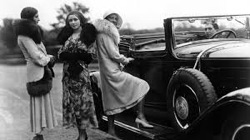
The 1920s was a time of prosperity when many Americans were living with wealth. With new and great ideas flourishing, many new inventions sprang up and came into play in every aspect of American lives. Also, with blacks trying to help other African-Americans gain equal rights, writers, artists, poets, and many other activists assisted them by giving moral advice such as having pride in oneself. Both of these examples show optimism since it helped people and made them satisfied during the 1920s. Thus, even with some despair that occurred, the number of optimistic views changed the 1920s into a time in which new inventions flourished and rights were gained.
The Journey of Future Transportation
Akshaya A.
“The reality about transportation is that it's future-oriented. If we're planning for what we have, we're behind the curve.” This statement by Anthony Foxx makes us consider if the vehicles that we have now are too old and uninspiring or high tech and classy. Because transportation in the future is the big news, people wonder what it will be like in the future. According to Garry Golden, a futurist in transportation, travel in years to come will be high-tech and modern. We all know that gasoline that powers cars is a fossil fuel that is harmful to the environment, so scientists and designers together are working on a way to improve cars to lessen their impact on climate change.

One of the greatest changes that might happen in the future might involve cars. Cars might run completely on electricity or batteries instead of gasoline. According to Garry Golden, making these changes might seem difficult because they need to be powered by strong enough batteries, and this is partially because cars are so big and heavy. So Golden has come up with a solution. He wants to make cars out of plastic composites so that they will be lighter. Sensors also might be put in cars to make the cars “understand” the world around them. As Golden says, “If we have cars that can communicate with one another, they can adjust speeds to eliminate traffic jams.”
In about 30 years from now, trains might be completely upgraded to include automation. Around 60 percent of people might live in urban areas in the next 30 years, so people are more likely going to get around on trains more often. Trains are going to be running on tracks that are in the water, powered by an electromagnetic system. There are going to be more trains in the future than there are now, and cities might be even more packed than they are currently. People are trying to work on figuring out a way to make trains self-driving in the future. This might sound like a terrifying idea, but there are already self-driving trains in some countries. A semi-autonomous train can navigate itself but in order to start, the engine needs to be turned on manually.

In addition to trains and electric or hybrid cars, bikes also cause no environmental damage. Bikes can often promote an individual’s level of health and physical activity. There is an explosion of bike-related technology cropping up all around the world. Some bikes are going to be run on electricity, and built with a built-in USB charger. Some others might have rear view or hidden cameras on the back of them to give a recording of what it “sees” to prevent accidents. Some people are trying out the self-destruct mode of a bike to automatically self-destroy if anything goes awfully wrong with the bikes.
Transportation is going through great changes that will affect the way people live in the future. Scientists are still trying to figure out how we can improve our environment and reduce carbon pollution. Cars, trains, and bikes can all contribute to help alleviate the problems of climate change in the present and in the future.
Akshaya is a rising 6th grader in the Shaker School district. She enjoys gymnastics and tennis.
Courage
Akshaya A.
Courage is a word that can be interpreted in many different ways, but I would describe it as risk-taking or willingness to do whatever it takes to fulfill a goal or overcome a hardship. A character can also be courageous by being an upstander, meaning standing up for yourself or someone else. I know this because I know two different characters who have a lot of courage. One character, Theseus from a Greek myth, and the other, Ally from the book Fish in a Tree by Lynda Mullaly Hunt, show personal courage in the face of pain and difficulty. I, also, know what it is like to overcome a fear and embrace the true courage that everyone has.
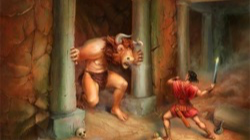
I know that Theseus had courage because something really unfair was happening on the island of Crete, and innocent people had to die due to an unfair law. Every year, the king of Crete chose fourteen young Athenians to be eaten by the Minotaur, a monster that was half man and half bull. Theseus thought that it was unfair that this happened. So, risking his own life, he went to Crete, hoping to kill the Minotaur. He ended up killing the Minotaur and found his way out of the impossible maze in which the Minotaur was kept. So now innocent young people didn’t have to die by King Minos’s law.
In Fish in a Tree, Ally has courage because she has to go through a lot of obstacles. Ally is a sixth-grade student who doesn’t know how to read. She is very shy, but her new teacher sees the best in her, and he privately teaches her to improve her skills. Ally has to figure out how to deal with her bullies who tease her every day and trick her. Partly because her dad is in the army and her parents are separated, her mother divorces him, and now Ally has to endure the tragedy of a sad family life. In the end she figures out a way to fix every single one of her problems. She shows everyone that she can be very smart by solving an extremely hard riddle that the whole sixth grade couldn’t figure out. Ally learns how to read, and ends up winning class president.

My story begins one Saturday morning at gymnastics lessons. We were on the mats trying to do back-handsprings with a spot, and everyone else tried it but I was very scared and just did a front-handspring instead. My coach was telling me to try it, so I faced my back to the mats and bounced backwards on my hands and flipped in the air, almost landing on my neck. Luckily that did not happen, and I landed safely on two feet.
I was so happy that I actually did it and I kept doing it again and again. It felt so good to finally be able to do something that everyone else could do. Some of my friends came up to me and said “nice job,” or “you did it!” I was just glad that it happened at least once in my life.
Many people underestimate the meaning of courage and people who have it. But courage is a strong word with many different meanings to it, and these three examples show us what courage is really like. When I succeeded on the floor exercise, I realized that courage is a great characteristic to have and people should not fear it.
Akshaya is a rising 6th grader in the Shaker School district. She enjoys gymnastics and tennis.
Concepts of Education
Anna W.
As Pablo Picasso said, “I am always doing that which I cannot do, in order that I may learn how to do it.” Sterling, the main character in the memoir Rascal by Sterling North, and Jonas, the main character in The Giver by Lois Lowry both have unique learning experiences. Sterling has to educate himself while Jonas has to obey the rules of his society in his education. Despite these differences, both of the main characters are very different from others in their society and they both have threatening environments to deal with.
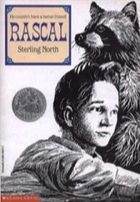
Sterling is a very independent 12-year-old boy who makes a lot of his own decisions. He has abilities that a common 12-year-old lacks because he doesn’t receive much care from his father. After the tragedy of Sterling’s mom’s death when he was young, his dad often leaves home for work. This leaves Sterling home alone for long periods of time with little food and resources. To deal with his loneliness, Sterling learns to make animal friends. One of them is a little raccoon named Rascal. Rascal helps Sterling deal with his loneliness, and Sterling makes sure that he and Rascal have enough food to survive.
Sterling grows more mature when he realizes that Rascal has to be tamed. He has been forced to understand that there are things that a young boy can’t control. Sterling is very self-sufficient and capable of making things that will let him cope with Rascal. The canoe, cage, and leash he makes for Rascal help Sterling realize that Rascal belongs in the wild. He realizes that Rascal won’t be truly happy if he’s trapped, and Sterling fulfills the animal need for Rascal to live in the wild.

Jonas from The Giver lives in a dystopian society that was meant to be a utopian society. Sameness and equality are the goals for this little world. Every emotion, color, and individual characteristic are taken out of everyone. People have no choices in life because the government decides what jobs people have, what family they have, and everything that would normally be in an individual’s control. Jonas has to learn how to not stand out, and to understand why the society functions the way it does.
Jonas has been chosen as the next Receiver of Memories in his 12-year-old ceremony. After he gets assigned, he has so many more points of view on his society. Jonas goes through a special education that no one else does to become the one youth chosen to understand real life experiences and emotional memories. He experiences a different life in the memories he receives. Jonas starts to reject his society because he realizes what they have taken from people’s lives. While in training, he has to learn how to control the memories, and how to get advice from them. Jonas officially understands the real world, and he wants to change his society. Therefore, he runs away, bringing his little brother Gabriel with him.
Sterling and Jonas attempt things that are hard for them to learn. They both learn from their experiences, and get more mature through them. Picasso believed in learning by doing, and Sterling has more experience with that method. I, also, prefer education with fun involvement. I have experienced both Chinese and American education. In my point of view as a teenager, I prefer the American education system. In the United States, subjects are taught in a fun and unique way such as using a play, a video, a song or other methods. However, in China, students spend a lot of time learning from textbooks and homework. They don't have enough time to enjoy their hobbies and sports. Nevertheless, all the different types of education have their positive and negative characteristics, and all are unique in their own way.
Anna, a resident of Clifton Park, is a rising eighth grader. Her hobbies are playing basketball and ice skating. Gym and art are her favorite subjects in school. She likes to spend her free time reading.

Fifth grader Cynthia Zhang wrote this letter in response to the historical novel Fever 1793 by Laurie Halse Anderson. As she impersonates the
sixteen-year-old character Matilda, Cynthia's letter addresses the devastating concerns of Mattie's family and friends during the yellow fever
epidemic in Philadelphia. Cynthia has also added various vocabulary words to add drama and tension to her letter.
Imagined Letter from Matilda Cook on the Occasion of the Yellow Fever Outbreak of 1793
Cynthia Z.
September 2, 1793
Dear Alison,
It has been a month since the fever started. I am distressed about Mother because she is ill. Recently, my friend Polly Logan died and another girl, Colette Ogilvie, has been struck by fever. At first, they spoke only of an enigma fever near the port. Now doctors are calling it Yellow Fever. The days are so hot that the number of dead victims of Yellow Fever has culminated in a huge number. Philadelphia is beginning to look haggard because of trash piling up and flies and mosquitos everywhere. I hope that this atrocious disease does not infect anybody else in my family. Mother does not want me or anybody else to be ill, and she tells me to go away from her. I will be very relieved when I see frost stopping this affliction. I wish that someone could console me right now.
Your friend,
Matilda Cook
Island of the Blue Dolphins
Cynthia Z.
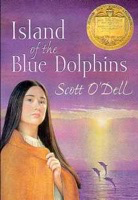
When people are left alone, they face great difficulty. In the book Island of the Blue Dolphins by Scott O'Dell, a twelve-year-old girl who is part of an island tribe loses her community when they sail away to a new place. Karana jumps off the ship to stay with her brother and loses her family forever. Karana learns to survive alone by showing courage, determination, and intelligence.
When she faces the wild dogs alone, she doesn't run away. Instead, she fights them and shows a lot of courage. Also, she knows how to face difficulty with bravery, especially when she punishes the wild dogs. She says, “Wherever I went during the day, I felt secure with my new weapons, and I waited patiently for the time when I could use them against the wild dogs that had killed Ramo.”
Karana is also very determined when she is hunting the giant devilfish for food, knowing that it is the best seafood around her home. Karana makes a very special spear especially designed to hunt devilfish. It takes a very long time to make it, and determination kept her at it. Then she again shows persistence when she doesn't give up during her hunt for the devilfish, and says, “I jumped to my feet to pull in the spear, thinking that I might have a chance to throw it again.”
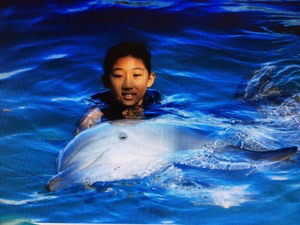
Finally, Karana is a very smart young woman who always thinks before she does something. She makes a fence so the wild dogs could not steal anything and she would be protected. She builds the fence over many days and shows great intelligence in using bull kelp instead of seal sinew because she knows the dogs would chew on the sinew and break down her fence. Also, she makes the whale bone ribs in her fence curve outwards so that no animals could climb over it. Karana explains her thinking process: “I build the fence first because it was too cold to sleep on the rock and I did not like to sleep in the shelter I made until I was safe from the wild dogs.”
In conclusion, Karana survives alone on an island for 18 years by showing bravery, persistence, and intelligence. Karana is brave by fighting the wild dogs and not running away. When she is making her spear, she never doubted that she could make it. Making a spear is a very smart idea. Also, did you know that Karana is a real person?! Her shocking survival tale is real.
Cynthia is a competitive figure skater and gymnast who enjoys swimming with dolphins.
Opinion
Haejin L.
Achieving enough sleep on schooldays is a crucial need of teenagers everywhere. By starting school later, students can get the right amount of sleep, and they will have enough time to get ready for school. In addition, with a fully awake mind, students will be able to perform better throughout the day. For these reasons, starting school later, such as at 8:30 a.m., would be a nice option that would bring out the best in students.
First of all, since their sleep cycles change, students in middle and high school need later wake-up times. According to the website, www.npr.org, “…the pediatricians say… As children become teenagers, their sleep-wake cycle shifts two hours later.” This means that teenagers fall asleep at around 10:30 p.m. or later and wake up naturally at around 7 a.m. or later. Also, Dr. Cora Breuner, an adolescent medicine specialist at Seattle Children’s Hospital, says that teenagers get only 6 to 7 hours of sleep each night instead of the suggested range of 8 to 10 hours of sleep. Because students are sleep-deprived due to the lack of sleep, it is harder for them to function through their fatigue at school. Finally, a writer on the website, www.npr.org, states, “…a National Sleep Foundation poll found that 59% of middle schoolers and 87% of high schoolers are getting less than the recommended 8 1/2 to 9 1/2 hours of sleep a night.” However, by moving the time that school starts to 8:30 a.m., we can insure that students come to school with their full attention.
Along with the extended time spent in bed, teenagers would also get more time to get ready in the morning. Because students are sleep deprived, it’s harder for them to function through their fatigue at school. Since school starts so early, teenage students have to rush preparing for school. Students may forget to bring their homework during this rushed hour. Or perhaps they skip breakfast to save some time. According to the website, www.livestrong.com, “The side effects of not eating breakfast negatively impact weight, hormonal health, memory, cognition and mood.” Not only would starting school later be a healthier option, but it would also be a more environmental friendly option. If school started later, students would no longer have an excuse not to take the bus to school.
Last, students will be able to perform better in and out of school since they would get sufficient sleep every day. Based on a study released by the University of Minnesota which examined data from more than 9,000 students attending 8 high schools in 3 states, students’ attendance and academic performance improved with later start times, while tardiness, substance abuse, and symptoms of depression declined. By making school start later, more students would show up to school on time with a more positive attitude. Furthermore, more sleep for teens would decrease the risk of traffic accidents since they would be more attentive.
Clearly, it would be a major benefit for teenagers if school started later. School wouldn’t meddle with their sleep cycles, nor would they have to worry about rushing in the morning. Even their attitudes would change positively making them and the people surrounding them happier. What more do school districts and school boards need to be swayed? Help the students live a healthier lifestyle.
From time to time, I ask students in different grades to respond to the same article, especially when the model excerpt is as rich in associations as is “The Cry of the Gull,” by Emmanuelle Laborit. This excerpt tells of Laborit’s extraordinary family, and especially her father and uncle, who refused to cut her off from the beauty and intensity of music despite her hearing disability.
What follows are two personal explorations, one from fourth grade and one from eighth grade, inspired by the model exercise.
My Favorite Sense
Cynthia Z.
My favorite sense is touch because I use it a lot in gymnastics and it helps me do all the tumbling, flips on the beam, and all the moves on bars. I love doing gymnastics because it is really fun. I have been doing gymnastics since I was four years old. The part I like best in gymnastics is the tumbling. Touch is important in gymnastics because without touch I could not balance on the beam, I could not do anything on the floor, I would not be able to grip onto the bars and I would not be able to go over the vault.

I remember the time when touch helped me in a meet in Latham. On the beam, I felt as if I was a bit leaning sideways so I corrected myself. Also, I almost slipped off the bars when I was doing a back hip circle but I could already feel what was happening. While I was at vault, I was doing a front handspring over the vault and I felt that I was all loose so I tightened myself and I “stuck” my first front handspring. Another time, I was doing my leap pass on the floor in my routine when I was leaning forward too much as I put my foot down earlier and the judge did not take a point off for that! That is why my favorite sense is touch.
An Appreciation of Sight
Haejin L.
Of all our senses, I value the ability to see the most. Without sight, we wouldn’t be able to do a plethora of things. For example, the lack of sight would disable us from driving a car, reading a book, and just enjoying the beautiful colors displayed before our eyes. Life without seeing would be dull. Memories would all be remembered in darkness. Without seeing, we would never know how someone looks, or even how we look. When our parents say, “Your hair is brown,” we would never know what the color “brown” looks like. Without sight, life wouldn’t provide us the great things that we can see and do. Just as how I appreciate my sight, others value different senses.
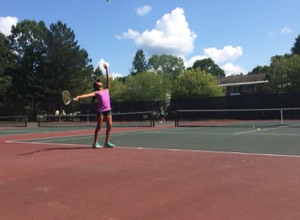
In the excerpt from Emmanuelle Laborit’s memoir, “The Cry of the Gull”, her most important sense, touch, is very different from mine which is sight. Seeing is all about the individual colors, but touching or feeling means physically perceiving different textures. Laborit is deaf, but her father and uncle want her to experience music. We can’t see music. The waves of sounds aren’t visible to us, but we can feel vibrations of instruments. For example, Laborit writes, “He [my uncle] wants to make me experience the guitar, so he tells me to bite the neck of the instrument.” By biting the guitar, Laborit can feel vibrations coming off the guitar. Our eyes can see only the strumming of guitars and the vibration of the strings, but we can’t see how those vibrations feel. Also, she says, “The people in the concert hall, the lighting effects, the atmosphere are all part of the vibrations.” Although the sight of the concert can help exaggerate the vibrations, vibrations can’t paint a picture in our heads.
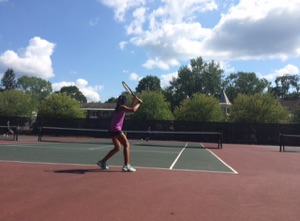
While Laborit loves to feel the vibrations of her uncle’s guitar strings, I enjoy watching tennis balls make contact with the strings of my racquet. Sight plays a big role in tennis. The key to playing tennis is following the ball both with our eyes and our feet. Our eyes can help us detect the precise location of the ball and its speed, so that our body can move towards the ball. We also need sight to know where to stand for the serve and return. No other sense can help us see where the baseline, the net, or the service box are. It is also very important to make contact with the ball in the center of the racquet. We can’t just carelessly swing our racquets in hopes of hitting the ball. We have to look directly at the ball and try to hit it in the middle of our racquet strings. Last, we need to make the right calls. We have to use our eyes to see whether the ball is in or out. We have to be able to see the lines on the court that tell apart a ball that is in and a ball that is out.
Losing the ability to see would be an awful happening. It would forbid us from doing everyday activities, like playing tennis. But it could also strengthen our remaining four senses, like our hearing. There have been many musicians who used blindness to their benefit, like Stevie Wonder. So if we do get unlucky and lose a sense, we should always look at the bright side of this disability.
An Admirable Character
Ansh G.
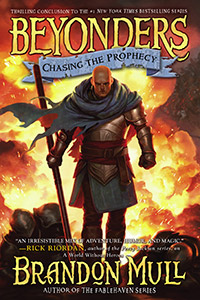
To care for someone you know means a strong bond, but to care for a complete stranger — now that’s a lot of trust. In the trilogy Beyonders, by Brandon Mull, Jason and Rachel go into another world called Lyrian that has war and tyranny raging. With the help of a lost legend and three cities, they stop the evil king’s rule and free the land of cruelty. Though they face a lot of losses and difficulties, they stand beside each other and never give up. Many of the heroes/heroines have qualities that help them get through the hardships, but one person’s trait helps most of them stay alive.
Jason’s most admirable quality is that he never stops believing. He had to find a way to get home, distinguish a fugitive’s hideout, locate a dead seer, and defeat a king with psychic abilities and a whole army of soldiers under his control – a lot for anyone to do. To make it worse, not only is he sixteen and will die if he fails, but the chances are so thin that even paper is thicker. But he never stops, and because of that, he saves millions of lives and frees a land of living in fear.
If this person were real, I’d be more than glad to meet him before he went off on his quest. I’d love to learn from him and be the next ‘‘Jason Walker’’ of this world and Lyrian. Through Jason and other characters, Brandon Mull has changed me and I think it is for the better. To be a person who never gives up is one thing, but to be the next ‘‘Jason Walker’’ is just on a whole different level of commitment.
Ansh is a sixth grader in the Guilderland School District. He enjoys tennis, swimming and reading.
Fighting for Freedom
Haejin L.
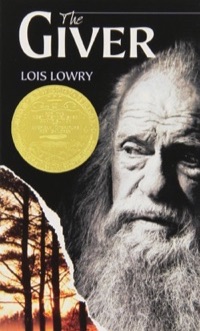
Did you ever finish an interesting book and admire one of the characters in the book? In the dystopian novel, The Giver by Lois Lowry, the main character, Jonas plays a very admirable role. Jonas lives in a community where the people are not able to express or even feel any emotions or have any negative thoughts. Jonas gets picked to be the next Receiver of Memory, or the only one in his community who keeps all the memories of everything that has happened in the world. Jonas wants to share these happy and painful memories with his community. At the end of the book, Jonas goes on a difficult journey to Elsewhere, meaning the world outside of his community, to release all his memories back to his people. Jonas’s courage and wisdom make him an admirable person.
When Jonas receives painful memories from the Giver, the former Receiver of Memory, Jonas is brave enough to take the pain. One of those painful memories is the memory of heavily wounded soldiers who fought during the Civil War. Although Jonas is scarred by this vision, the Giver helps Jonas minimize his pain by giving him happy and cheerful memories. Another sad memory that Jonas receives is the memory of an elephant that gets shot by a hunter, and another elephant tries to help the wounded elephant. Both elephants roaring out of pain is a sad memory for Jonas but he accepts this memory and he is brave enough to handle the pain.
At the end of the book, Jonas is forced to make risky, but brave decisions. For example, right before he goes to Elsewhere, Jonas steals some things, such as leftover food from his neighbor’s doorstep. He will need the food for his everlasting journey. It is also very brave of Jonas to even go on the journey. He is willing to risk his life to free the people from his community from their lives that lack feelings. Jonas’s bravery is one of the traits that makes him an admirable person.
Another quality that makes Jonas admirable is his wisdom. For example, Jonas recognizes how wrong his community is. The previous Receiver of Memory, the Giver, shows Jonas the process of release. Jonas sees how a twin is getting injected, which causes the baby twin to cry and eventually die. Although Jonas is angry, he decides that when he reaches Elsewhere, he will fix this problem by releasing all the memories filled with emotions, so that the people would feel the horror of releasing an innocent person. Another time that Jonas acted wisely is when he and Gabriel, a baby who could become a potential Receiver, are on their journey. When their community sends search planes that can detect body heat, Jonas keeps on giving Gabriel memories of the cold, and Jonas tries to remember memories set in a cold place to give off less body heat. These two examples of Jonas’s wisdom make him a character deserving respect.
Despite suffering and struggle, Jonas becomes a very strong individual. But because Jonas shows courage and wisdom, he is able to free memories fraught with different kinds of emotions and abilities to do things beyond normal people’s levels. Jonas fights for the freedom of his people. Just like Jonas, we should not be afraid of losing and should stand up for what we believe in.
Haejin is a student at Shaker Junior High School. She lived in the Netherlands for several years.
One Young Writer
Agnes Y.
I often ask my youngest students to respond to a book we are reading together. This response is from Agnes Yang, a seventh grade student at Shaker Junior High School. Her brief essay illustrates the timeless power of the science fiction doomsday tale, Fahrenheit 451, by Ray Bradbury that depicts a society in which books are condemned-- actually burned-- by "Firemen". This riveting novel has sparked much writing, and Agnes's response answers the following question about the hero of the novel, Montag, and Clarisse, a young rebel who is liquidated:
How does Clarisse help Montag become more fully human?

In the novel Fahrenheit 451 by Ray Bradbury, Clarisse helps Montag by letting him realize that he's not being himself as a human but is a person controlled by his society. She does this by having a conversation with him about how people don't realize or observe what's around them. For example, she tells Montag that sometimes drivers don't know what grass or flowers are. Also, when she tells him that there is a man on the moon, Montag realizes that he hasn't looked up in a long time. These actions of Clarisse make Montag think back about himself and rethink if he is truly happy about his job and his life.
Clarisse also warns Montag about what's happening in reality by comparing the past time to the present time. She says that she is worried about the children of her own age killing each other and not taking responsibility unlike the time in which her uncle's grandfather lived. She also tells him that firemen used to put fires out instead of starting them to burn books. This is when Montag starts to think about how people would feel when their houses and books are burnt down and leads him to take one of the books to read. Clarisse is the one who encourages him to be truly himself and think or feel however he wants to think.
Agnes enjoys helping others and smiling to make people feel better.
Malcolm X.
Ryan C.
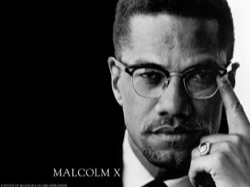
Many of the well-known political leaders of America’s past have come from a rather privileged background. Malcolm X is the exception. He was able to achieve greatness from a less than advantaged past. The book, The Autobiography of Malcolm X, as told to Alex Haley, details Malcolm’s entire life. From his time on the street, where he learned how to carry himself confidently and persuade people to buy his products, to his life in prison, where he learned proper oratory skills and expanded his vocabulary, Malcolm was able to become an influential political symbol for the rights of black men before he traveled to Mecca and tempered his previous ideas.
When Malcolm went to Harlem, he became very acquainted with city life. He met a man named West Indian Archie, who unfortunately helped Malcolm get started with drug dealing. Strangely enough, Malcolm learned the confidence to deal with people and the way to embrace new situations from his time as a drug dealer. In this autobiography, Malcolm describes the ins and outs of his hustle. It was clear that he was confident in his ability to sell drugs and conduct himself with people. This confidence led to his later years, where he was forced to speak in front of large crowds.
After being caught in the course of an armed robbery, Malcolm went to prison. It was here that Malcolm became the learned man that he eventually was. From his own words, we understand that Malcolm learned much of his vocabulary from reading and writing out the words in the dictionary: “Moreover, with a little effort, I could also remember what many of those words meant.” (X, 175). Malcolm X also learned many of his strong oratory skills when he joined the debate group in Norfolk Prison in Massachusetts. It was here that he learned to argue the points of his opponent, make points of his own, research topics, and present them. Malcolm said that he picked up debating very quickly and enthusiastically: “But I will tell you that… was as exhilarating to me as the discovery of knowledge through reading had been.” (X, 187). Malcolm discusses how enjoyable debating was to him. To even further prepare him for life as a representative of the Nation of Islam, Malcolm explained that he brought some of Elijah Muhammad’s teaching into his speeches in prison. Malcolm says, “And if there was any way in the world, I’d work into my speech the devilishness of the white man.” (X, 188). Later in his short life, he went on a pilgrimage to the holy city of Mecca, in which he realized the fallacy of his previous beliefs: not all white men were devils.
Looking back on Malcolm’s past, one can see both the hardships and growth that he went through. From drug dealing in Harlem and being imprisoned for ten years, Malcolm X became one of the most important political leaders in the civil rights movement. Malcolm X taught future generations that from the most difficult events in your life, the most valuable lessons could be learned.
Ryan C. is a freshman at Shaker High School in Latham, NY.
Students entering 10th Grade Honors English at Shaker High School must read Frankenstein by Mary Shelley during their 9th grade summer. Caitlin wrote this comparison/contrast essay in preparation for that book about “the other” in society.
The Stranger
Caitlin K.

A boy with a black leather jacket and heavy combat boots walks down the hall in school. His pale, ghostly face is solemn as he listens to the music which might be coming through his black headphones. He is part of the “Goth group” at school and considered strange because of his appearance, hobbies, and behavior. He calls to mind the Misfit from Flannery O’ Connor’s story, “A Good Man Is Hard to Find”, and might possess the same hostility and aggression. However, despite the similarities in appearance, the Misfit opens his victim’s eyes and changes them instantly, while the Goth group stays excluded. The Misfit has a role as “the stranger” in society, while the Goths in school remain separate and alienated.
Goths embody the “strange” ones in a society, and they do this in many ways such as appearance, interests, and hobbies. The first difference between the Goths and “normal” kids is appearance. Their appearances are an obvious way to help them stand apart from the rest of society. By their way of dress, they present an anti-social statement and resentment against being “boring” or the same as everyone. Goths are also considered the “strange” ones at school because of different behavior from that of others. They may listen to unique genres of music, read different types of books, or prefer to spend time in places that aren’t popular with the rest of the school. Gothic students’ hobbies and interests may seem strange to non-Gothic students. Therefore, this can invite a lot of shunning or disrespect towards Gothic students, because they seem like the “strange” kids. Or they may be accepted by other students who respect individuality. Another big difference between Goths and the Misfit in the story is that the Gothic students usually are not outwardly violent. They usually remain by themselves or with their group and spend much of their time devoted to listening to music or reading. In addition, these Goths have most likely not been “punished”. Many of them have not been thrown in jail, or been in serious trouble with the law. Most of them have neither committed serious crimes nor are genuinely bad people. Although the Gothic students strive to be unique in every way possible, the Misfit from Flannery O’Connor’s story is trapped in the mindset of murdering others.
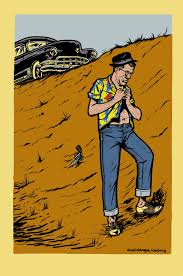
Unlike the different looking, usually peaceful Goth student, the Misfit has noticeably different qualities and characteristics. The Misfit has committed and been punished for severe crimes in his lifetime. He states, “…somewhere along the line I done something wrong and got sent to the penitentiary…it was a head-doctor at the penitentiary said what I had done was kill my daddy…”. The Misfit has been punished enough times in life to think that “…crime don’t matter. You can do one thing or you can do another, kill a man or take a tire off his car, because sooner or later you’re going to forget what it was you done and just be punished for it.” Unlike the majority of Gothic students, he is outwardly violent. He kills an innocent family of six and does not find it inhumane in any way. Finally, while the Goth students are still in school, the Misfit has had many experiences in life such as being a gospel singer, undertaker, being a husband twice, and much more.
In conclusion, the biggest difference between the Gothic group at school and the Misfit from the story is how they live and interact with others. The Goth students are a family within themselves and communicate with each other. The Misfit is isolated and independent, working alone and not part of a group. Also, one can infer from The Misfit’s statement, “ My daddy said I was a different breed of dogs…” that he was mistreated as a child because his father referred to him as an animal, not even a human or a child. He experiences things on his own, while the Goth students do it together. These two examples show how there are many different ways to be “the strange one” in any society.
Caitlin is a sophomore at Shaker High School in Latham, NY
My Favorite Character
Ryan C.
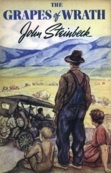
Many characters in Dr. Jekyll and Mr. Hyde, A Separate Peace, The Grapes of Wrath, and The Red Badge of Courage inspired me. From those four books, my favorite character is Tom from The Grapes of Wrath, because he has strength, intelligence, and kindness.
I like Tom because he is strong. In the beginning of the book, the narrator mentions that Tom had to go to jail because he killed someone, although he did it in self-defense. That shows that Tom is strong enough to defend himself. Also, during his time in prison, he had worked as one of the mechanics, fixing and driving trucks. When the Joad family was in California, Tom was always one of the ones trying to look for work, and driving the family around everywhere.
Tom is one of the smartest Joads. Whenever the family car breaks down, Tom knows what’s wrong and knows how to fix it. Several times during their journey, Tom went with Al to find the necessary parts to fix their car. When the Joads were at the Hooverville, Tom was involved in a small incident with a police officer. Tom was smart enough to know that he should leave immediately if he didn’t want to be caught by any officers following him.
Tom also knows what’s right. He has a level of thoughtfulness unequaled by anyone in the book other than Ma Joad. During the Joads’ time in the government camp, they couldn’t find stable work, so Tom knew that they had to leave, no matter how great the conditions were at the government camp. Also, after Tom had killed another man and was in hiding, he realized he needed to finish Casy’s work of organizing the migrant workers.
In the entirety of The Grapes of Wrath, Tom Joad is shown to be strong and smart, and he has a very good moral compass. Tom is strong because he can defend himself. He is smart because he knows his way with people and machines. Helping people in need and knowing what he must do also make Tom good.
Ryan is now a freshman at Shaker High School in Latham, NY.
A key component of our writing programs at Big Mind Learning involves opinion writing. We often ask students to imagine that they have been asked to submit an editorial to a local newspaper and should write about an issue that deeply concerns them. That assignment recently resulted in the two following essays, one about sports and one about video games. We believe that writing opinion essays prepares students well for argument writing in high school and college and for the essay question on the ACT and the SAT.
Video Games and Violence
Ryan C.
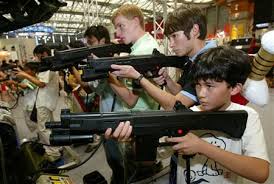
Video games are a daily part of many Americans' lives. Video game consoles are in practically every home. Some of these games are "family friendly." But other games are not, and I believe that these non-family friendly games can cause violence.
I consider swearing to be a formx of verbal violence. It is crude, and is often used to hurt someone emotionally. Certain games are known to cause "raging." Raging is exactly what is says it is: when someone gets extremely angry, especially when frustrated. During the playing of certain games, this raging becomes frequent. A gamer often curses a lot when in "rage mode." Because of the frequency of raging during game sessions, the cursing, unfortunately, becomes habitual, and the player ends up using curse words in his or her daily life. This is just one way video games cause violence.
Not only do some video games cause swearing, but they can also cause the player to become destructive. In many video games, you are given the freedom to do almost anything you want. Because the player knows that he has this power and that a video game world is not real, he does not care what he does. Some of this freedom is used destroying things. In games, the notion of destroying something becomes enjoyable. Although players do not generally realize this, the feeling of enjoying destruction develops in their real life personalities. When a gamer is in rage moods in real life, these personalities become apparent, and the player temporarily forgets the line between the game world and reality. Because the player forgets, he does not care if he destroys things. All this results from video games.
Video games can act as a sort of drug. They are addicting, and they suck the player into that world. Because of this, the player wants to play this game all the time and it may become hard to refrain from playing this game even for a single day. Similar to what happens with other drugs, if someone tries to stop a player from taking part in the activity, he will get angry. When a player becomes angry, he may become violent. When some players become violent, they may express the same traits as when they rage during game play. If players do not control how much they play and if they are not aware of how they act in the real world, they could really hurt somebody.
I believe there is a correlation between video games and an increase in violence in America. Video games are a very common thing in many households, and teens especially can be affected by video games. They can become more destructive, they can swear more, and they can become addicted and obsessed. However, these traits can be controlled by managing the amount of time played, by monitoring the length of time a person plays, and by watching for any changes in the player.
Safety in Sports
Christian B.
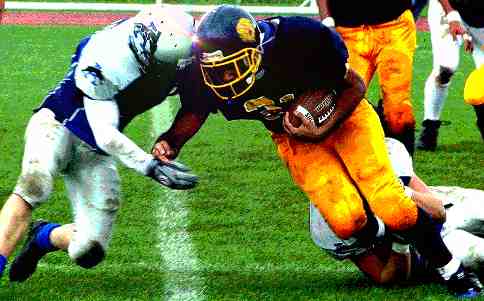
Injuries in sports are very dangerous. In American football, there is tackling; in baseball, there are collisions when players slide into bases; and in soccer, players “head” soccer balls into the goals. Although many people say that safety gear now is enough to protect the players, I do not believe so. If the safety gear is so good, why are there more and more injuries in sports?
I believe that new rules and focusing a lot on enforcing those rules are the best methods to achieve safety. Recently, a new MLB rule banning collisions at home plate has been passed because this activity has resulted in many injuries to the body, including the head. Also, there are rumors that there will be changes in the way the NFL teams can return a punt. But in my opinion, this is not enough. In the MLB, people can still slide into the other three bases on the baseball field. Also, in the NFL, the rule changing the way players return the punt has not passed, meaning that is not a rule in the NFL yet.
A rule that limits the performance of sports equipment is also another way to protect players from getting injured. For example, in amateur baseball, there is a new baseball bat standard known as BBCOR. This standard reduces the "trampoline effect," which slows the speed of the baseball immensely. Many people are not in favor of this because games are less exciting. There have been fewer homeruns and far hit balls after the new BBCOR standard was released. The BBCOR standard was released because many pitchers were getting hit in the head, which resulted in very severe concussions and in extreme cases, death.
In many sports there are safety standards that safety equipment makers must meet in order to sell the gear to players. But I think that the standard should be raised and enforced to lower the amount of injuries. Even though players wear all sorts of safety gear such as padding, shoulder protectors, and helmets, often there is something lacking, which leads to injuries. So, if we raise the standard, players will be safer.
I believe that creating new standards and rules and then enforcing them is the best way to make sports safer. I think that companies that make sports equipment should spend a little bit more time trying to improve the equipment that they make. Also, I believe that new rules and standards are the best way to improve the safety of our players. I think that rules, standards, and better safety gear are the best and only way to make sports safer.
Christian B. is an eighth grader at Shaker Junior High School in Latham, NY
From time to time we find the imitation of excellent models particularly instructive for students. Here, one high school student used models of description to enjoy adding liveliness and vividness to her own highly-specific description. Two examples follow.
A Sunset in Ethiopia
Robert Dick-Read
from Sanamu: Adventures in Search of African Art
After our meal we went for a stroll across the plateau. The day was already drawing
to a close as we sat down upon a ledge of rock near the lip of the western precipice. From where
we sat, as though perched high upon a cloud, we looked out into a gigantic void. Far below, the stream
we had crossed that afternoon was a pencil-thin trickle of silver barely visible in the gloaming.
Across it, on the other side, the red hills rose one upon another in gentle folds, fading into the
distance where the purple thumb-like mountains of Adua and Yeha stretched against the sky like a twisting
serpent. As we sat, the sun sank fast, and the heavens in the western sky began to glow. It was a coppery
fire at first, the orange streaked with aquamarine; but rapidly the firmament expanded into an explosion
of red and orange that burst across the sky sending tongues of flame through the feathery clouds to the
very limits of the heavens. When the flames had reached their zenith, a great quantity of storks came
flying from the south. They circled above us once, their slender bodies sleek and black against the
orange sky. Then, gathering together, they flew off into the setting sun, leaving us alone in peace to
contemplate. One of the monks who sat with us, hushed by the intensity of the moment, muttered a
prayer. The sun died beyond the hills; and the fire withdrew.
The Life of a Sunset
Modeled after Dick-Read
Seok Young C.

Deciding to take a break, I took a step out of the doorway, and proceeded to walk. Already, the sun was disappearing. I kept walking down the path, watching the bright hues of red, orange, pink, and yellow filling the dim sky with energy. Creating a contrast to the vivacity above, the dark bushes framed the energetic colors. While the colors spread into the sky, the songs of the cicadas and crickets increased. As if the songs of the bugs were affecting the environment, the bright streaks of colors darkened until they matched perfectly with the bushes and trees below. It seemed as if the darkness of the trees had spread into the sky, like black ink streaming through the white pages of a book. The ink eventually covered every bright spot. Finally, at the door in front of me, I enjoyed the last moments of the crickets and cicadas, and stepped back inside.
Jungle Night, Ecuador
Annie Dillard
from "Jungle Peace" in Holiday
A nightjar in deep-leaved shadows called three long melodic notes, and hushed. The men with me talked softly in clumps: three North Americans, five Ecuadorians who were showing us the jungle. We were holding cool drinks, sipping, and idly watching a hand-sized tarantula seize moths that came to the lone bulb on the generator shed beside us.
It was February, the middle of summer. Great green fireflies spattered lights across the air and illumined for seconds, now here, now there, the pale trunks of enormous, solitaire trees. Cicadas ground out their long noise. Beneath us the brown Napo was rising, in all silence; it coiled up the sandy mud bank and tangled its floating foam in vines that trailed from the forest and roots that looped the shores.
Each breath of night smelled sweet, more moistened and sweet than any kitchen, or cradle, or garden;
each star in Orion seemed to tremble and stir with my breath. At once, in the thatch house across the clearings
behind us, one of the Jesuit priests, filled with unknown feelings, lifted his alto recorder and played, played a
wordless song, lyric, in a minor key, that twined over the village clearing, that caught in the big trees' canopies,
muted our talk on the bankside, and wandered over the river, dissolving downstream.
Interlude in Ithaca
Modeled after Annie Dillard
Seok Young C.
I slid across the stream, holding a shoe in each hand, brushing my toes against the sleek rocks under the water. The children’s laughter, birds’ chirping, and the light splashing of water echoed through my ears. In the water, small fish raced past my legs, down the stream. Trudging down the stream, which was almost getting to be a river, the sweet scent of lilacs increased as I was getting nearer. The waterline gradually climbed up my legs, and walking became harder; the currents became stronger. I splashed to the bank of the river and freed myself from the strong grip of the currents. My feet sank in the soft ground until they met the hard, polished wood of the bridge. Already, I could feel the cool air, mixed with tiny droplets of water. As I neared my destination, my clothes clung to my shoulders from the dampness. I looked up, and the great waterfall stood before me, crashing into the pool below.
SPAC, MOMIX Botanica: A Review from a Sixth Grade Dancer
Ji Woo C.
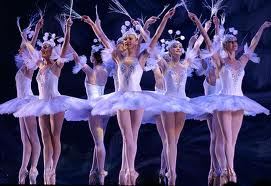
On August 1st, 2013, I visited the Saratoga Performing Arts Center (SPAC) in Saratoga Springs to watch the MOMIX Botanica. I really loved everything I saw and ate. I went there with some of my classmates for free and a lot of other schools came too. Also, I went with my best friend, and if I were asked to go there again, I wouldn't refuse.
I saw a lovely bridge, with water flowing down underneath, everyone amazed at the beautiful view, people gazing silently with the sound of water simply sliding down the sharp edged rocks. I sat on the slightly wet grass next to my best friends. We leaned slightly towards the right to see the amphitheater. Slowly, as the time passed, the bright sky got darker and darker into the night.
I liked every dance that the group did, but if I had to choose one, it would be the one where they were waves in the ocean. I loved how they were under the rippling cloth and how they stood up and went forward under the cloth to form waves and the ocean. It was so elegant and beautiful. I wanted to imitate them because they were so good at acting like the ocean. I saw dancers imitating bees, whales, oceans, trees, sunflowers, and much more. They expressed emotions by their facial expressions and their body movements. It was incredible how the dancers were so flexible with their bodies. I was amazed that the performers imitated horses, with one person standing in front and another standing in the back. The people in the back bent their bodies to imitate the back of the horses.
One thing that I did not like was that the theater was outside. My friends and I were freezing so we had to huddle close together. Everyone looked cold because most of them were shivering and put their jackets on. Also, I think the dancers must have been very cold and their muscles wouldn't have been very warmed up. I know how it feels to dance without warming up because I'm a ballet dancer. Because it was so cold, I didn't feel as if I would have been elegant and I would have felt stiff. Therefore, I think we should have been allowed to sit in the theater indoors.
SPAC was marvelous and everyone enjoyed it. If anyone asks if she should go to SPAC, my answer would be a definite YES! I think that going to places like SPAC and vacations give me a lot of things to write about so I love going on trips. Going to SPAC gave me an experience of what it would be like if I were ever a professional dancer.
Peace Through the Centuries
Alice L.

I am the ocean which provides salt for kimchi
I am the light of the sun
I am the roar of the thunder
I am the lion king of the animals
I am the seagull upon the waves
I am the heat of the fire
I am the shiniest of jewels, the aquamarine
I am a dragon in courage
I am a whale shaking the whole ocean
I am a mountain in the high
I am a sentence of the book
I am the peace of war
Who is it who keeps peace through centuries?
Who creates all the natural living things?
Who teaches the place where water comes from?
(If not I)
Alice attends 7th grade at Shaker Junior High School. She enjoys playing the flute, swimming and reading.
Without My Senses
Yena S.
Everyone relies on their five senses, but people rely on one sense above the other four. My sight and hearing are the most important senses to me. Without them, I would not be able to do anything I love to do.

The most important sense for me is my sight. Without my sight, I wouldn’t be able to do things that I love, such as tennis, violin and more. I wouldn’t be able to see my friends or family. I would be in darkness forever. I wouldn’t like the darkness because there would be no light. I like drawing, but creating pictures would be impossible without my sight.
The second most important sense for me is my hearing. When I play tennis, I enjoy listening to the sound of the ball when I hit it with my racket. Without hearing, I would never hear that sound. Also, I would never be able to listen to music which would be terrible because I love listening to pop music on my iPod. I couldn’t imagine a world without “Best Song Ever” by One Direction or “Concerto in A Minor” by Vivaldi. When I hear this music I feel as if I could get up and dance.
As I imagine how it would feel to have no music in my life, I feel sorry for Emmanuelle Laborit from The Cry of the Gull because she grew up without the sense of hearing. Emmanuelle grew up with music, even though she was deaf. Her father and uncle loved music and wanted her to enjoy it. Due to their love of concerts, Emanuelle grew up loving music and feeling the vibrations in her body. When Emanuelle’s uncle was playing the guitar, he had Emanuelle bite the neck of the guitar so she could feel the vibration of the music even though she couldn’t hear it. I wonder if I would be as passionate about music if I couldn’t hear.
Having no sight or hearing would be very uncomfortable not to mention inconvenient. I wouldn’t be able to do the things that I love. I also think that my touching sense, taste and smell are as important, and I would hate to lose them.
Yena S. attends seventh grade at Shaker Junior High School. She likes drawing, playing violin, and playing tennis.
Persistence
Seok Young C.
The first step to success is persistence. To be able to accomplish a task or overcome a problem, one must endure struggles and not give up. Although talent, luck, and education are important, without tenacity, nothing can be achieved. Hyeonseo Lee, a North Korean refugee, who fled that country in the 1990s, and my father would never have been able to reach their goals without their great persistence.
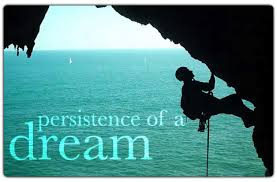
Many refugees who flee North Korea are mostly captured, then harshly punished for their crimes. At the young age of 14, Hyeonseo Lee left her home country, which she was taught to believe was the best, after realizing how much suffering actually took place in her country due to the famine of the 1990s. Her mother had received a letter from a coworker, explaining that by the time they were reading the letter, the coworker’s family would be dead from starvation. Lee was deeply shocked by this, and decided to flee. During her journey, she was close to having her identity revealed numerous times. When someone reported her for being a North Korean refugee in China, she was sent for interrogation by Chinese officers. Fortunately, not giving in, Lee was able to persuade the officers that she was Chinese, and kept her identity hidden. Later on, she even managed to help her entire family gain freedom. Ultimately, Hyeonseo Lee’s tenacity guided her to her goal.
Similarly, because of his persistence, my father was able to immigrate to a foreign country, a difficult feat. In South Korea, it is considered honorable to be able to live in a foreign country, and even more so to be living in the U.S. Usually, the Koreans who are able to immigrate to America have graduated from prestigious universities, and have highly-paid occupations. Despite my father’s lack of a high ranking background, he was able to accomplish this profoundly difficult task. As an engineer in South Korea, my father gained an excellent reputation, and his managers favored him. Eventually, he found engineering jobs in Israel, Germany, and finally the U.S., gradually increasing his position in the companies.
If Hyeonseo Lee or my father had any intentions of giving up, they would never have come this far. From these two people, I learned that in any case, persistence will bring up one’s chances dramatically.
About Seok Young: Seok Young will be a sophomore at Shaker Senior High School in Latham, NY. She plays violin for the Empire State Youth Orchestra and swims competitively.
Stop Animal Killing
Ji Woo C.
I think animal killing isn't necessary. We take away animal habitats and kill them when we construct homes and malls, slaughter animals for food or our clothing, and use animals to test new medications or cosmetics. Killing animals is cruel and gruesome, and we are responsible for some animal species going extinct.
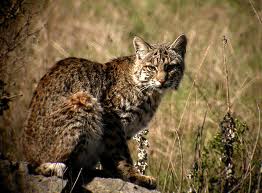
First, people shouldn't kill animals because their habitats are a part of nature and without nature, we would have no plants. When we build companies or buildings, we take away animal habitats. For example, when people cut down trees, small animals are losing their homes. How would you feel if your home was destroyed?
Also, it would be better if people ate less meat. According to HuffPost Living, every American eats about 200 pounds of meat every year. I think we should eat less meat and have at least one night per week without meat. Right now, people have a small amount of vegetables, rice or noodles, and a huge amount of meat for dinner. We could try to be healthier and eat more vegetables and less meat.
Another reason is that people test medicine on animals and the animals die even if their results are good. A lot of countries have banned animal testing. Unfortunately, the United States of America has not banned animal testing and people do animal testing legally. According to research on animal testing, there are more and more animal-tested products every second. What do you think will happen to the animals? Not all testing results come out good. Also, these animals get killed after the testing.
Furthermore, people kill animals to look pretty and use animal skins to stay warm and beautiful. There are other ways to stay warm while looking gorgeous. We kill horses and cows for their leather, and sheep, lambs, goats and pigs for their skin. Also, birds become extinct because people use their feathers to auction rare feathers. Treehugger.com reported that a long time ago many women would participate in auctions of feathers for their hats and clothing. In addition, konicaminolta.com reported that sheep were becoming extinct because they were struggling over food and water.
My final reason is that at least 10,000 species go extinct every year because of human activity. You may not notice the animals in your backyard that you're killing. There are thousands of animals and we keep killing them. You may think the animals that are in your backyard eating all your plants are annoying, but how do you think they can survive alone without eating plants? Would you feel happy if your home was getting destroyed?
We can help save these innocent animals by eating less meat, slowing extinction and animal testing, and stop destroying habitats. People can host protests and rallies and start a petition. Most importantly, we can all try to pass a law to stop being cruel to animals, ban animal testing, and start building more sustainable companies. Let's all try to save these poor, suffering animals.
About Ji Woo: Ji Woo will be a sixth grader at Blue Creek Elementary School in Latham, NY. She likes to read during her free time.
My Creation
Mateo N.
In many countries, people are poor and their children can’t go to school to learn. One day I won a million dollars in a lottery. The lottery organizers said, “You can’t take the prize for yourselves or your family, but you can spend it at one charity.” Because I want other kids to learn, I created a charity to help kids go to school. The program I’m creating is one where the older kids go to school to learn and then when they come home they teach the work to the younger kids in their family. They have a big responsibility to teach their brothers and sisters. I want to start a charity that will help kids learn and teach at the same time.

I got this idea from a tale from Old China. The old monk told a tale about monks that had meter long chopsticks and they kept trying to feed themselves but they failed. The people looked as if they were starving. Then the old monk told the young monk about Heaven where people were happy. In Heaven people fed each other across the table. The moral of the story is: Be caring to others and others will be kind to you.
In my system of education, kids giving to kids is good for the community. First, the older kids that are in 8th and 10th grades go to school to learn every morning. After lunch they go to a separate room to learn to teach the students in daycare. Another part of the program is that the principal trains them in reading and math. Then they get paired one to one, but they can’t be paired with their brother or sister. They get trained for one hour and then they teach for a class period. In reading they help the students sound out words and they follow along in the same book and read back and forth. During the math class they play adding and subtracting games. One important part of the program is that they overlap the learning at home. I hope this will be a great system.
This is my new idea to help poor kids around the world learn. The old tale from China helped me think about this charity. I am glad that I used the million dollars for a charity that helps poor children.
About Mateo: Mateo lives in Albany and likes being in the fifth grade. He also loves soccer, gaming, and reading.
Recess is Important in American Schools
Mateo N.
Recess should be longer in America's schools, especially in schools that have no break. It's important to let kids get exercise so that they can take a break from school, they can run and stimulate their brains, and they can build friendships.
One reason is that students need to take a break from schoolwork. If they get too overwhelmed, they get stressed. If they rest, they can stop being stressed. Students sometimes get distracted or bored because they sit too long and they need to take a breather. Sometimes kids fall asleep in class and so they should run outside. It's good if teachers let students stop in the middle of a long test and get exercise.
Another reason is that running stimulates the brain so it learns better. When students get exercise and run around, the movement clears the brain. Kids can stretch and have fun while they play different games. Then students don't have to worry about anything that's doing with school and recess can help them learn by running around. In fact, schools in Finland give children at least 50 minutes of recess per day, and kids there get higher grades than other students in the world on international tests. According to a new article in the Huffington Post, Finland's students ranked second in science, third in reading, and sixth in math.
One final point is that just playing with friends and hanging out with friends are good things to do because they can build friendships. Students can make new friends at recess. They can talk to their friends and tell what they have been doing like when I talk to my friend about Minecraft. Students can ask their friends if they want to come over to somebody's house. Kids can get to know their friends better and talk about what they did last weekend. They can hang out with their best friends that they don't see a lot in the halls or classroom.
Recess should not be cut out of America's schools. Students should take a break from schoolwork and relax because when kids run around, they let off steam. If American students run around more, they will be healthy and happy.
About Mateo: Mateo is a fifth grader at New Scotland Elementary School in Albany, NY.







